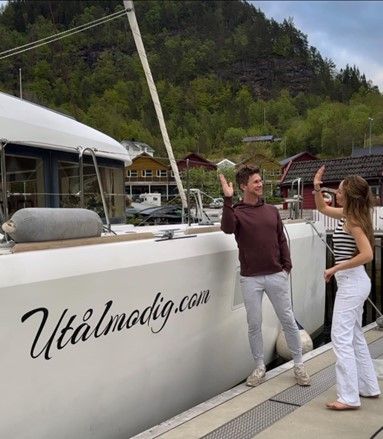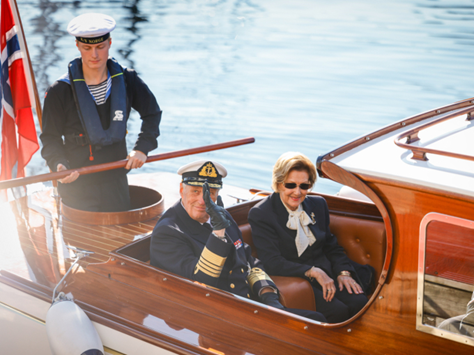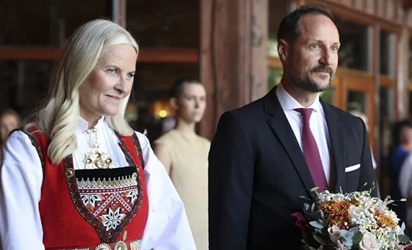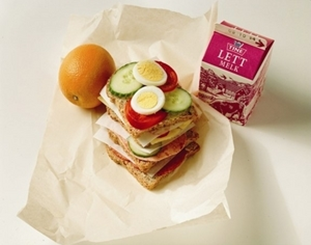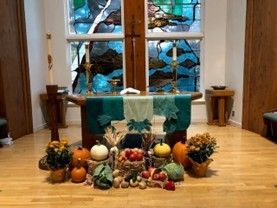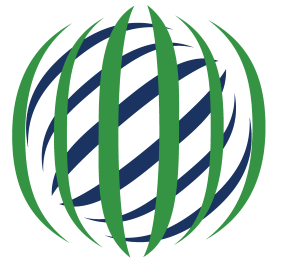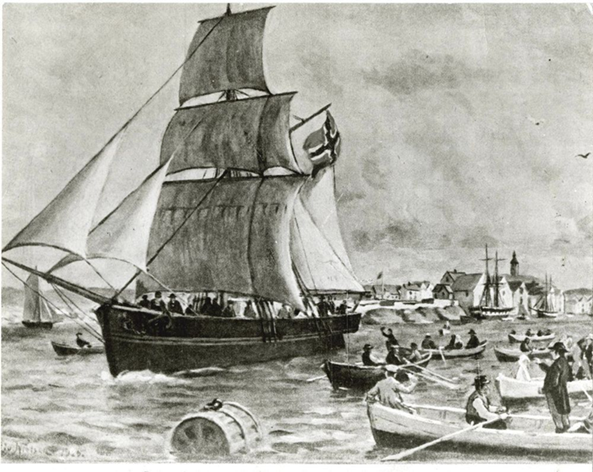

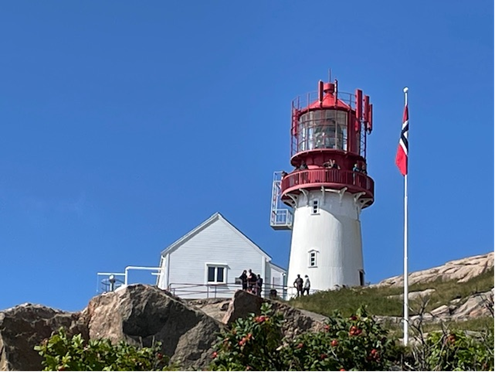
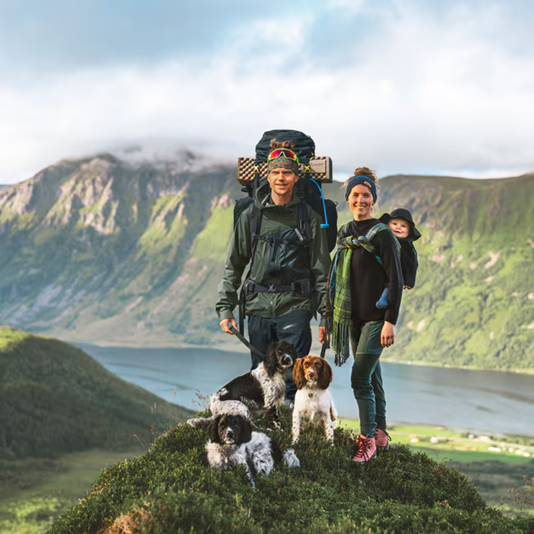
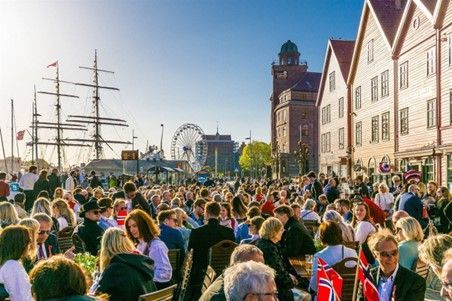
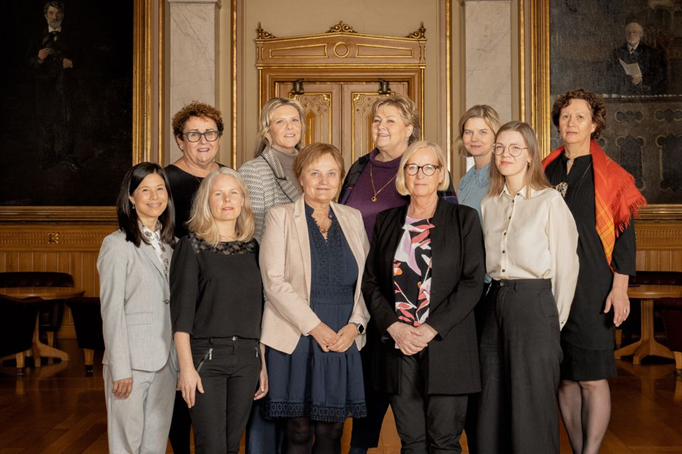

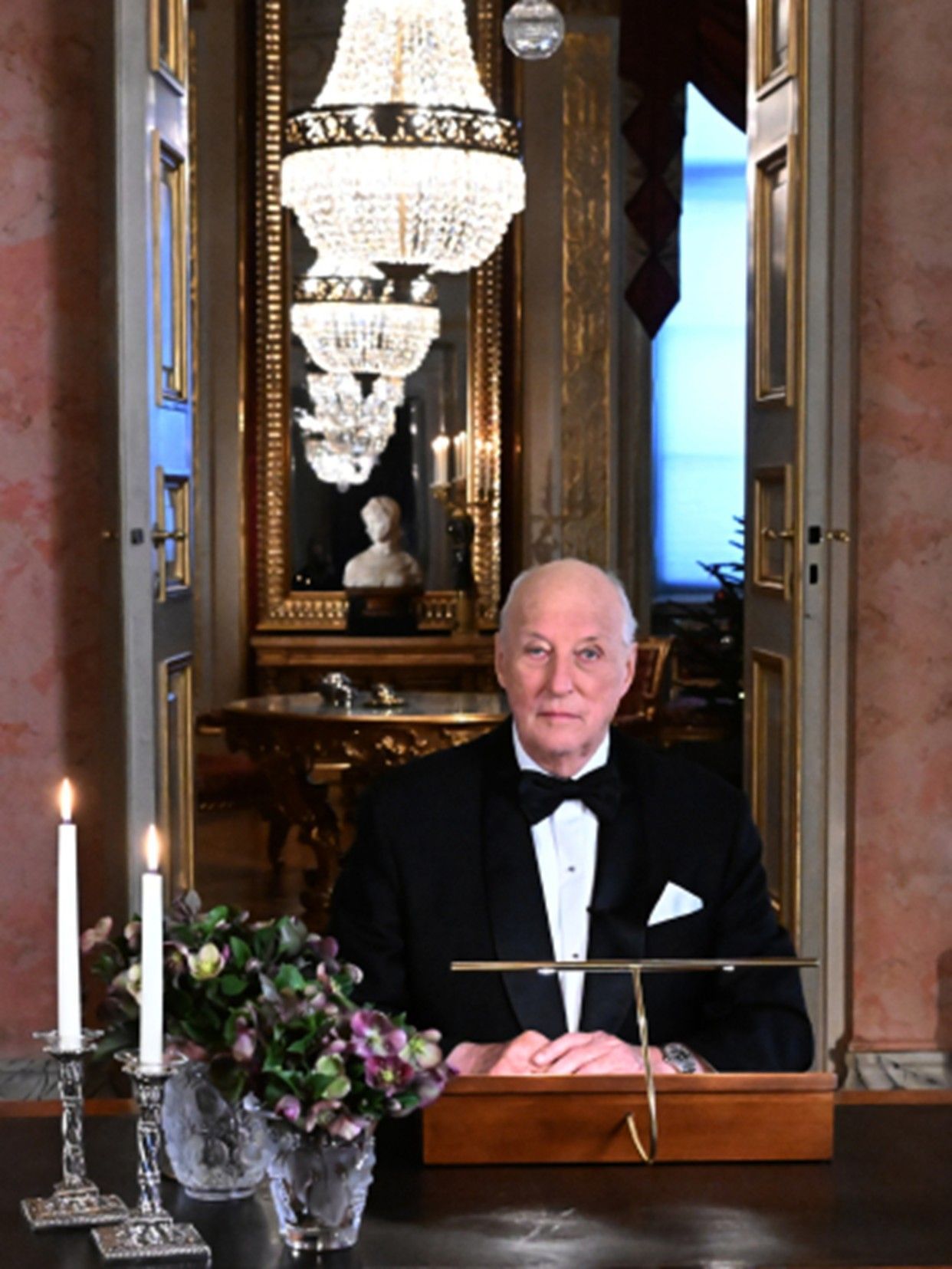
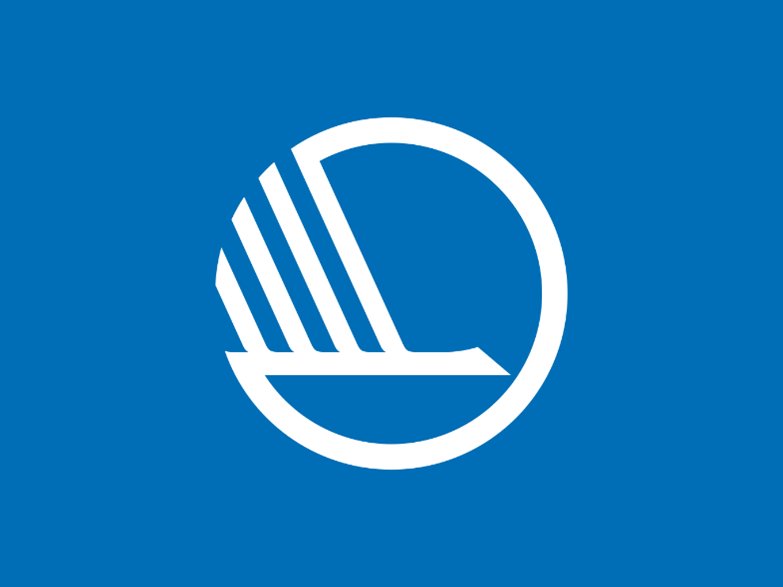
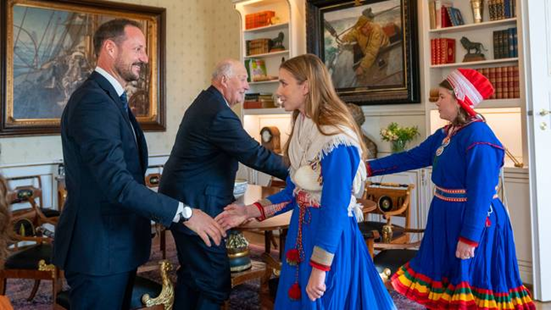
One way we know that Fall is coming in Norway is when our dear HM The King goes onboard the Royal Yacht, Kongeskipet MS NORGE, for the last time to inspect the crew and honor them for their service. Called the debarking, it marks the end of the season for this beautiful ship. This year, as in so many before, he was accompanied by HM The Queen and The Crown Prince. The ship was used this year for royal visits to local communities, like their visit to Agder and Rogaland. On June 1st, Crown Prince Haakon and Crown Princess Mette-Marit used the yacht to attend an anniversary celebration at Moster in Vestland marking the 1000-year-jubilee of the first Christian Laws of Norway introduced by King Olaf Haraldsson and Bishop Grimkjell at Mostratinget (a court meeting) in 1024.
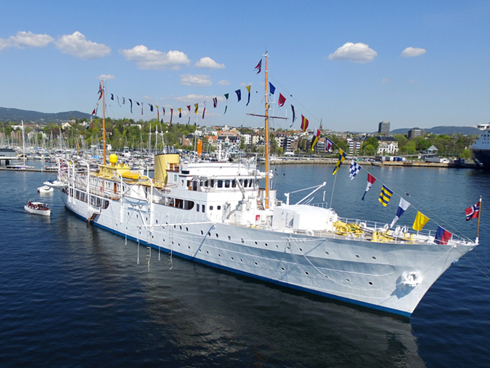
The ship has also been used for other official events, like when the King attended the 80-year anniversary of D-Day in Normandy, France on June 6th. The Norge is one of the world’s two remaining royal yachts since the British Royal Yacht Britannia was decommissioned in 1997. In May, the only other royal yacht in the world, the Danish Dannebrog, and the Norge were sailing together the Oslo Fjord on a Royal Visit to Oslo.
After WWII, the question of a royal yacht arose. The Norwegian press appealed to the people to raise the funds necessary to present King Haakon with a yacht on his 75th birthday. Among the followers of the appeal were 300,000 Norwegian school children. The King had become a true national hero through his steadfast resistance against Nazi Germany. In July 1947, the British motor yacht Philante was purchased for NOK 1.5 million. The ship is owned by His Majesty the King but is manned and maintained by the Royal Norwegian Navy. The Royal Standard is flown from the aftermost mast when the King is on board the Royal Yacht. At the time it was built in England in 1937 for the British aircraft manufacturer Thomas Sopwith, the 264-foot long Philante was one of the largest vessels of its kind. Sopwith used the yacht as a base when competing in ocean regattas. She served in the Royal Navy as an armed yacht during the Second World War. The Philante first entered Norwegian waters in 1938 in connection with a regatta at Hankø in Eastern Norway. In fact, our kings still use the vessel as a base when competing in major yacht races.
Another sign of Fall to me is seeing the children going back to school, bringing their Matpakke (“packed lunch”), homemade open-faced sandwiches wrapped in food paper. It’s a tradition in Norway to cover a single slice of bread with quite simple ingredients, typically yellow or brown cheese, ham or salami or -- in my day -- the very typical Norwegian Kaviar spread from a tube. If my mother had the time, I would get boiled egg with the Kaviar. Today you can buy small tubes for one piece of bread to be spread on just before eating. That way you spare your fellow students from smelling the fish through the paper.
Kaviar is a rich and flavorful paste made primarily from fish roe, not to be confused with fish egg caviar, a dining delicacy. Kaviar is a staple in Scandinavian cuisine, particularly loved in Norway. The production of kaviar in Norway dates back centuries influenced by the geographical and cultural context of local communities. As a nation with extensive coastlines and a robust fishing industry, the Norwegian fishing community saw the potential in utilizing fish roe, which was often discarded. Instead of letting this valuable resource go to waste, they began to refine the process of turning roe into kaviar. Initially, kaviar production was a rustic affair, often conducted in individual households. Fish caught during the fishing season was processed quickly to use the roe before it spoiled. Over the years, with the advent of industrialization and advances in preservation techniques, kaviar production transitioned to a more commercial enterprise.
Norwegian kaviar can generally be categorized into several types based on the type of fish used—typically cod (skrei), herring, or salmon. Each type has its unique flavor profile and characteristics. Kaviar made from the roe of Atlantic cod is particularly popular in Norway. It offers a mild flavor complemented by a slightly sweet undertone, which makes it quite versatile. This is the Kaviar I prefer and most children in Norway would agree.
Herring Kaviar is known for its intense flavor, and it is the preference of many Norwegians. It is typically saltier than its cod counterpart. Salmon Kaviar is a variant that is appreciated for its firm texture and rich, slightly smoky flavor.
The production of Norwegian kaviar follows several meticulous steps, each crucial to ensuring the quality and freshness of the final product. The journey starts with the harvesting of fish roe during the fishes' spawning season, typically between late winter and early spring when the fish are at their best. After the roe is harvested, it is carefully cleaned to remove any impurities and membranes that could affect the taste and texture. The cleaned roe is then mixed with salt to enhance flavor and act as a preservative. In many cases, additional ingredients such as sugar, lemon juice or spices might be added to enhance the flavor profile. This is where regional variations can emerge, giving different producers their unique touch. Once processed, the kaviar is vacuum-packed or canned to maintain freshness. Proper packaging is critical to prevent spoilage and ensure that consumers receive a high-quality product. Most of the Kaviar we buy in the US from Norwegian stores is made from cod and is of the mild kind. Well-known brands are Mills (see picture), Kavli and Abba from Sweden. My favorite brand is Mills which is available in the US from the store at the Seaman Church and other stores and supermarkets. Kaviar holds a cherished place in Norwegian culture. It is a traditional favorite on breakfast tables, commonly spread on bread, paired with boiled eggs or used as a garnish for other dishes.
Back to the coming of Fall, many Americans would be surprised to learn that Halloween celebrations have been growing in popularity in Norway since the 1990s. Increased exposure to American culture through movies, TV shows, and books are the major influences in the trend. Walk down any Norwegian street on October 31st and you will likely see children in costumes going from door to door uttering the phrase “knask eller knep” – Norwegian for “trick or treat.” It is common for adults to attend Halloween parties where elaborate costumes are the norm at bars and clubs with Halloween themed games to celebrate the spooky evening.
For me, a favorite part of Fall is the celebration of the harvest at church when we decorate with all the vegetables and flowers from the local farmers, known as Høsttakkefest. I take the opportunity to give thanks for the rich selection of food we receive and can share with others. In Norway, it is typically observed in September and mostly celebrated in local churches. Høsttakkefest is linked to the Michaelmas on September 29th. On this day, the Catholic Church remembers the archangel Mikael who weighed the souls that wanted to enter heaven. You will know it more as Thanksgiving which is mainly celebrated in the USA and Canada. The first Thanksgiving goes back to 1621 when it was a Christian observation by the first English immigrants when the harvest was secured, typically at the end of November. In Norway this is still primarily a religious event, but in the US the Christian aspect is less significant. It has become a national holiday -- more important for some than either Christmas or Halloween.
Now Fall is upon us, and we all go back to our day-to-day life. It’s a time for school, work, sports and hobbies. After spending the summer in Norway, Vigdis and I will be spending more time at home or together with friends in different organizations. For us in the Norwegian Society its almost time for the Annual Meeting. I hope to see many of you at meetings, at church, and hear from you about topics you would like me to cover in future articles. Enjoy the Fall and all its blessings.
The sloop brings the King and Queen to the main ship, Norge.
Photo: Jonas Been Henriksen / NTB
Crown Prince Haakon and Crown Princess Mette-Marit at Moster in Vestland
Photo: New My Royals
Matpakke, the traditional lunch for Norwegians.
Illustration: Norway. Meaning “packed lunch” in Norwegian, the word refers to a specific, minimalist style of open-faced sandwich that's easily assembled and eaten every single day.
Fall Celebration at church in Washington, D.C Photo: Lasse

